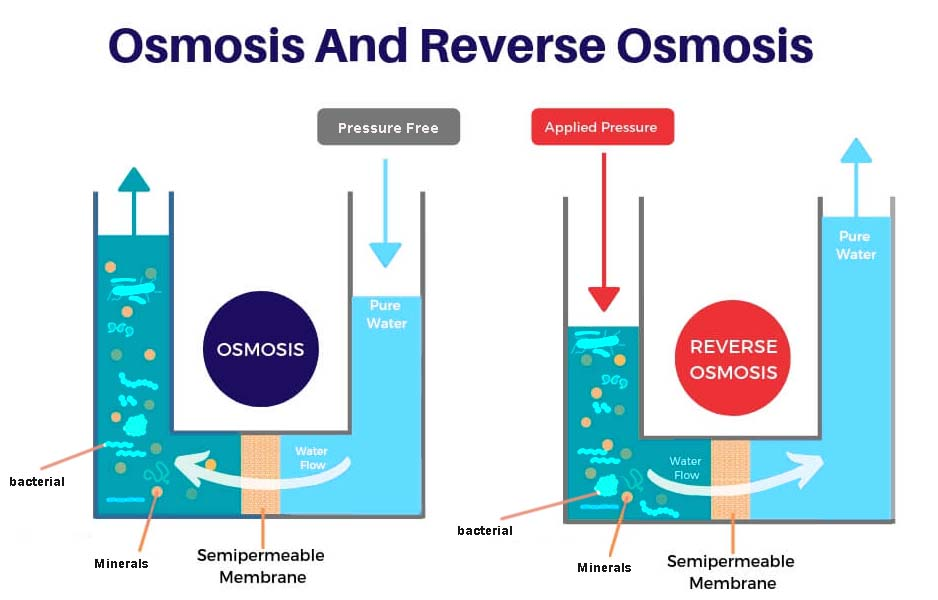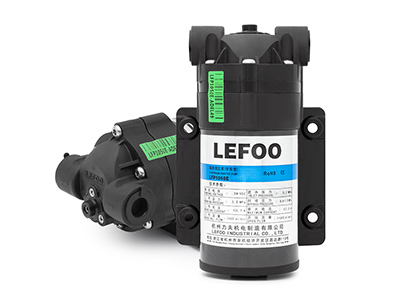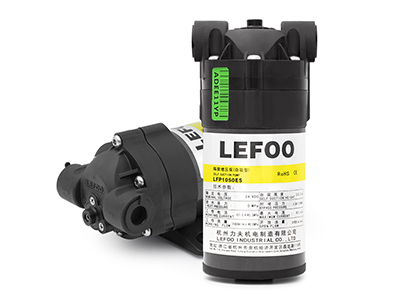Pump
The 50 GPD RO pump is a small-scale reverse osmosis pump commonly used in residential or light commercial RO systems. Its primary function is to push feed water through the RO membrane to generate purified water (permeate).
Pre-permeate treatment refers to the water pre-conditioning steps—such as filtration, softening, dechlorination, or anti-scalant dosing—before the water reaches the RO membrane. This step protects the RO membrane from fouling, scaling, chemical attack, and mechanical stress.
Here's how the 50 GPD RO pump interacts with pre-permeate treatment:
Maintains Adequate Pressure:
RO membranes require a minimum feed pressure to operate efficiently. A 50 GPD pump ensures consistent pressure, even if pre-treatment devices (like sediment filters or carbon filters) slightly restrict flow.
Proper pre-treatment prevents clogging, which could reduce flow or damage the pump due to excessive backpressure.
Protects Membrane Lifespan:
The pump relies on clean, pre-treated water. Sediment, scale, or chlorine reaching the pump can accelerate wear or reduce efficiency.
Pre-permeate treatment ensures the pump feeds clean water, minimizing fouling and extending the life of both the membrane and the pump itself.
Prevents Operational Issues:
Insufficient pre-treatment can cause flow reduction or backpressure spikes, risking mechanical damage to the pump.
With proper pre-permeate treatment, the 50 GPD RO pump can operate smoothly, maintaining steady permeate production.

Lefoo 50 GPD RO pump ensures high-purity water production, but the longevity and performance of the RO system depend on proper pre-permeate treatment. Installing the right filters and accessories protects the membrane, reduces fouling, and maintains steady water flow.
1. Multi-Media Filter (MMF)
A Multi-Media Filter is the first line of defense to prevent fouling in your RO system. It removes larger suspended particles and sediment from feed water.
Pro tip: Always install a 5-micron cartridge filter directly after the MMF to prevent MMF media from reaching the pump and RO membrane, avoiding damage and fouling.
2. Microfiltration (MF)
Microfiltration filters remove fine colloidal particles, bacteria, and other microscopic matter with pore sizes ranging from 0.1–10 µm. This step significantly reduces membrane fouling and ensures clean water for your Lefoo 50 GPD RO pump.
3. Antiscalants and Scale Inhibitors
Scaling is a common cause of RO membrane failure. Adding antiscalants or scale inhibitors before the RO unit reduces the risk of scale formation and extends membrane life.
4. Water Softener
A water softener replaces scale-forming ions (like calcium and magnesium) with non-scale-forming ions, preventing mineral buildup on the membrane. This is especially important for feed water with high hardness levels.
5. Sodium Bisulfite (SBS) for Chlorine Removal
Residual chlorine can damage RO membranes. By dosing feed water with sodium bisulfite (SBS or SMBS) at the correct concentration, you can safely remove chlorine before it reaches the RO pump and membrane.
6. Granular Activated Carbon (GAC)
Granular activated carbon removes organic compounds, residual chlorine, and chloramines from water, ensuring both safe and high-quality feed water for your Lefoo RO system.
7. Proper Design and Maintenance
For a Lefoo 50 GPD RO pump system to deliver years of high-purity water, it requires:
Correct pre-permeate design and filter sequencing
A consistent maintenance program
Experienced service support
Most RO membranes require at least 60 psi pressure to operate efficiently. If your water pressure is too low, retrofitting a Lefoo RO motor pump ensures consistent performance and reliable water production.
The Lefoo 50 GPD RO pump paired with a high-quality reverse osmosis membrane can effectively block a wide range of contaminants, ensuring clean and safe water for daily use. The RO membrane is capable of removing:
Microorganisms: Parasites, bacteria, viruses
Heavy metals: Lead, Mercury, Nickel, Barium
Minerals and salts: Calcium, Fluoride, Sodium, Sulfates, Phosphate
Chemicals and pollutants: Chlorine, Chloramine, Pesticides, Detergents, Alkali
Other harmful compounds: Arsenic, Nitrates
16 Mar 2025
Types of Pump for Water Purifiers and Analysis of Malfunctions01 Mar 2025
Knowledge About Refrigerant Pressure Transducers13 Feb 2025
LEFOO Showcases Innovations at Aquatech Amsterdam 202512 Jun 2024
Unlocking Clean Water: How Booster Pumps Enhance Purification SystemsProduct Inquiry
 English
English  français
français  Deutsch
Deutsch  Español
Español  italiano
italiano  русский
русский  português
português  العربية
العربية  Türkçe
Türkçe  Zulu
Zulu 

